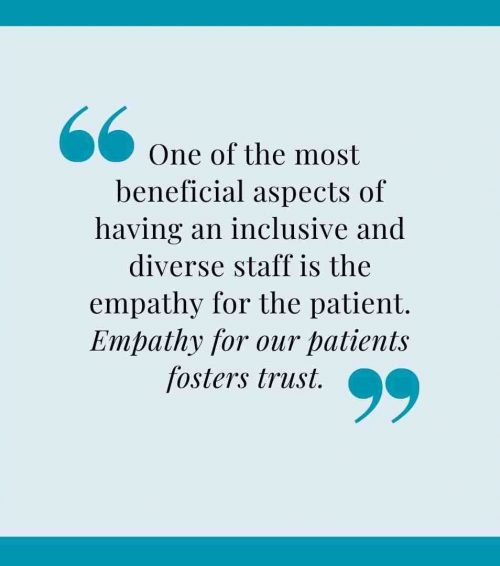
Investing In Equity is Good Medicine
The barriers to receiving equitable medical treatment in the United States have been “laid bare” by the corona virus pandemic as well as policies and treatment algorithms created by an inadequately diverse workforce of medical professionals. Since early in 2021, several American medical societies have created initiatives meant to break down barriers to patients receiving equitable medical treatment. Some of the barriers to treatment being examined involve barriers to a diverse workforce including African-American and Black doctors.
Some research has been done regarding discriminatory policies and algorithms in treatment. It is also well known that patients of color tend to have better outcomes when they have physicians of similar background and/or a racially and ethnically diverse team of physicians. For example, one notable study has shown that black patient research subjects tended to have better outcomes and chose a larger degree of preventative interventions when they were matched with doctors of the same race.1
I know that when I have practiced in multiple settings as a locum tenens psychiatrist, I am often greeted by patients who are shocked to see a person that looks like them or one of their family members. One of the most beneficial aspects of having an inclusive and diverse staff is the empathy for the patient. Empathy for our patients fosters trust.
One of my most successful interactions was with a 25 year old Black male patient who was brought in by police due to disorderly, agitated, and threatening behavior. He was clearly manic and was suffering from religious preoccupations and delusions and was unwilling to take any medication initially.
I asked him how he was doing. He said “Blessed!”. I then asked him what that meant to him. He explained it meant he was “doing very well — even better than good.” As I spoke to him, I began to realize that his street vernacular was a cover up for his fear and distrust of law enforcement and unfamiliar medical staff.
He had never been to this particular hospital. He told me about his incarceration for selling marijuana and his involuntary hospitalizations for Bipolar disorder — all of which had occurred due to his parents calling 911 on him. I asked him which medicine he felt most comfortable taking in the past. He said “No one has ever asked me that before. I guess Risperidone.”
Nursing staff returned with his preferred beverage from the menu (ginger ale) and he agreed to take Risperidone by mouth. Within an hour he was beginning to calm down. I asked him about what he had enjoyed doing as a teenager prior to his having problems in school. He enjoyed music, skateboarding, and going to church. He obtained a Bible from patient services and carried it with him wherever he went on the unit.
Within five days of treatment, he was no longer manic, delusional, or agitated. He was offered to convert from involuntary hospitalization to voluntary hospitalization. He was suspicious when presented with a voluntary hospitalization agreement. He said he would have to think about it, “Signing things has always gotten me in trouble.”
Throughout his many years of psychiatric hospitalizations, he had never been offered to sign in as a voluntary patient. He returned later that evening and said that he wanted to read the application for voluntary treatment. He requested help from me to understand what the form meant.
I began to translate the form using the same street vernacular that he had been using during our interactions. He was able to accept voluntary treatment and medication. He remained in the hospital for one week instead of the several weeks he had required during past hospitalizations.
This is an example of how inclusivity and diversity in medical treatment and staff selection can lead to better overall care. Health equity in medical care results in better treatment outcomes, improved levels of risk management, and higher levels of patient and staff satisfaction.
1. Does Diversity Matter for Health?
Experimental Evidence from Oakland
Marcella Alsan, Owen Garrick, and Grant C.Graziani
NBER Working paper No.24787 June 2018 Revised Aug 2019 Jel No. C93,112,114
